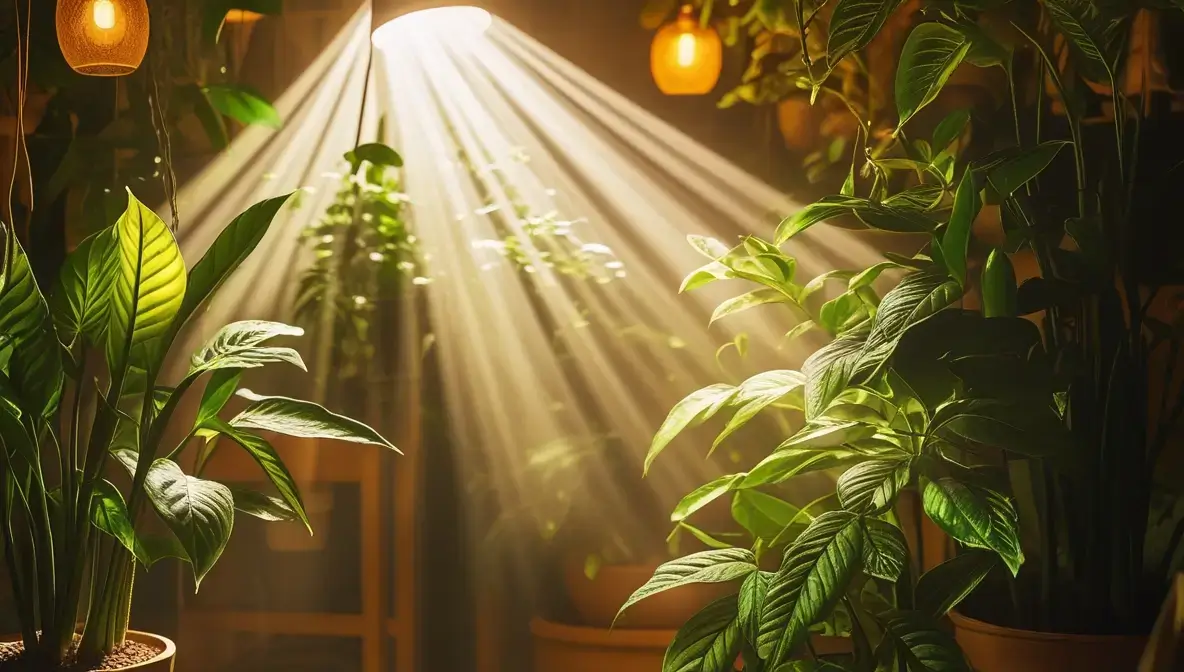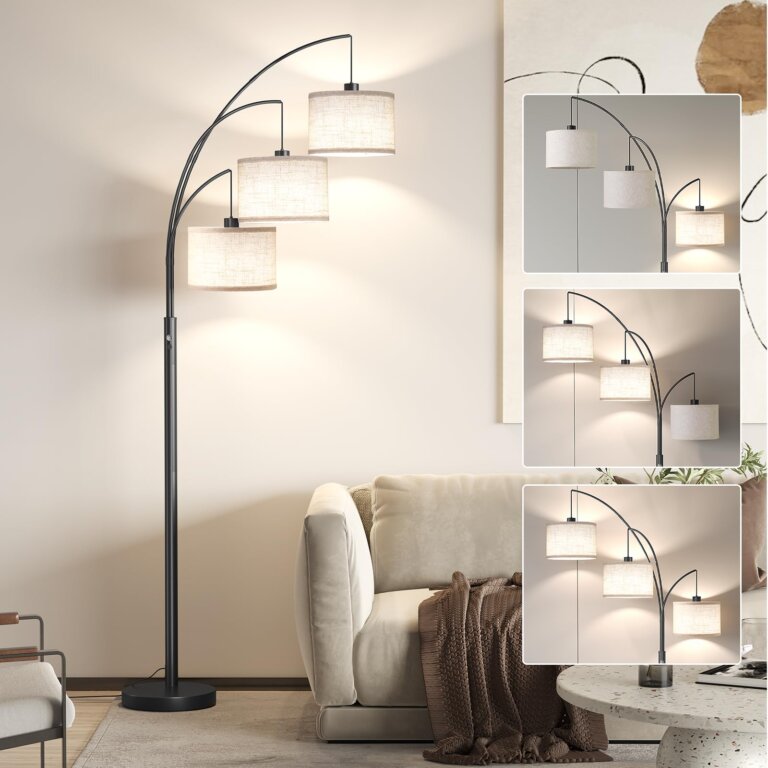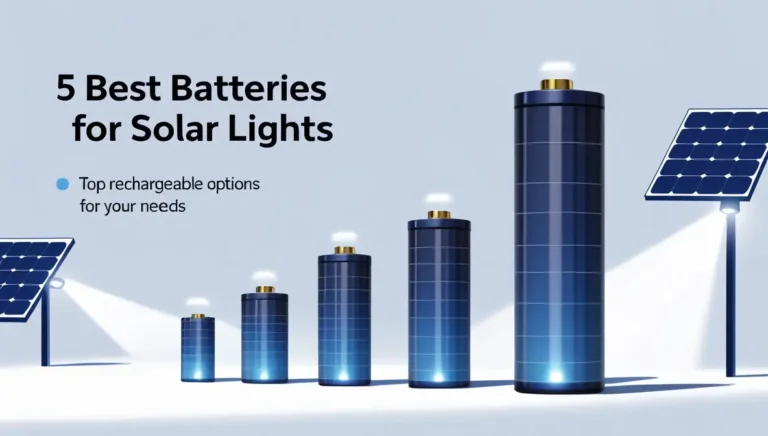Light is life for plants, and when it comes to indoor plants, lighting becomes even more critical. In nature, plants thrive under sunlight, which provides them with the energy they need to grow and carry out photosynthesis. Indoors, this natural light is often limited or inconsistent, and that’s where choosing the right lighting becomes essential.
Photosynthesis, the process through which plants produce their food, relies heavily on adequate lighting. Without the right light, your indoor plants may experience stunted growth, yellowing leaves, or even complete failure to thrive. Did you know that the quality, duration, and intensity of light can affect everything from a plant’s leaf color to its flowering patterns? It’s like giving your plants the fuel they need to grow strong and healthy.
So, whether you’re a seasoned plant parent or a beginner just diving into the world of indoor gardening, understanding the role of lighting is your first step to success.
Types of Lighting for Indoor Plants
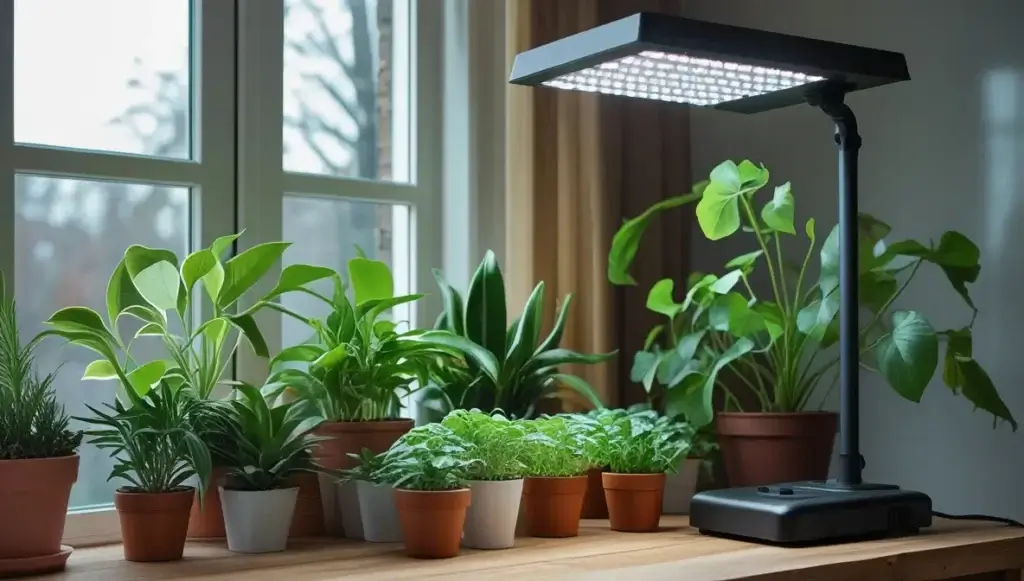
Best Lighting for Indoor Plants
When it comes to lighting for indoor plants, there are two main options: natural light and artificial light. Let’s break down each type and explore their pros and cons.
Indoor Plants
Cost Calculator
Natural Light: Benefits and Challenges
Natural light is the most budget-friendly and easily available source of lighting for indoor plants. Placing your plants near windows—especially south-facing ones—can help them soak up sunlight. However, natural light has its limitations. Seasons, weather changes, and the positioning of your home can all affect how much sunlight your plants receive. For instance, low-light winter months may leave your plants struggling to survive.
Artificial Light: Indoor Gardening
Artificial lighting can mimic the sun’s rays and provide consistent, reliable light for your plants, no matter the season or time of day. Here are some common types of artificial lights:
- LED Grow Lights: These are energy-efficient, customizable, and emit very little heat, making them perfect for long-term use. They’re also available in full-spectrum options, providing both blue and red light that plants need for growth.
- Fluorescent Lights: Affordable and widely available, these lights work well for small plants or seedlings. However, they lack the intensity needed for larger plants.
- Incandescent Lights: These are not ideal for most indoor plants, as they emit too much heat and consume a lot of energy. They can, however, be used for decorative purposes.
By combining natural and artificial light, you can create the ideal growing environment for your plants.
Choosing the Right Light for Specific Indoor Plants
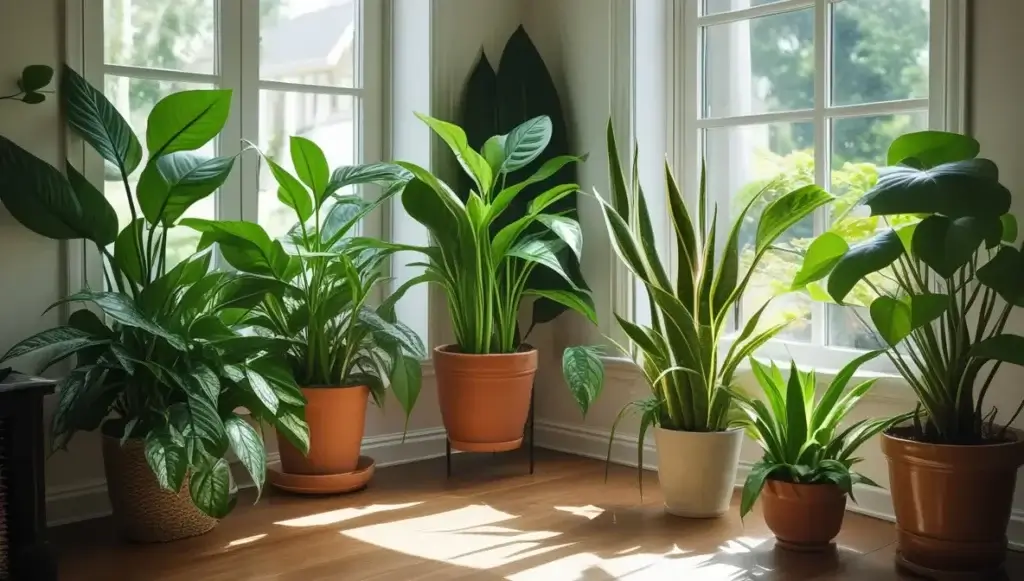
Not all indoor plants have the same lighting requirements. Understanding your plant’s natural habitat can help you determine the type and amount of light it needs.
Low-Light Plants
Plants like the peace lily, pothos, and zz plant thrive in low-light conditions, making them perfect for dim corners or rooms with minimal sunlight. These plants are adaptable and can tolerate less-than-ideal lighting, but even they will appreciate a little extra light now and then.
Medium-Light Plants
Medium-light plants, such as the snake plant and spider plant, require indirect light but can’t handle direct sunlight. A spot near an east-facing window is usually perfect for them.
High-Light Plants
Succulents, cacti, and other sun-loving plants need bright, direct light to thrive. These plants are ideal for sunny windowsills or rooms with ample natural light. If your home lacks sufficient sunlight, consider investing in high-intensity grow lights to keep them happy.
Factors to Consider When Lighting Indoor Plants
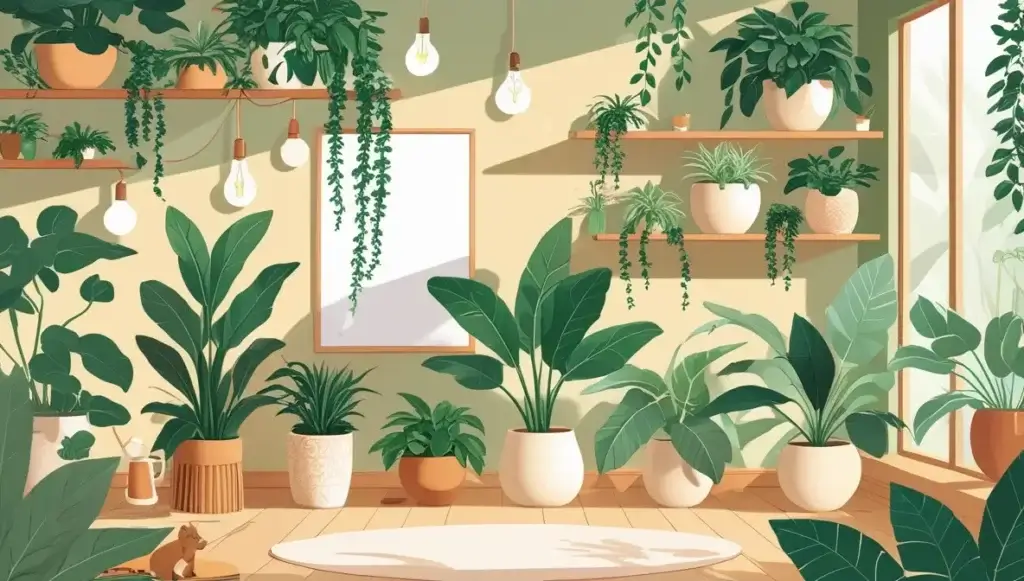
Proper lighting isn’t just about turning on a light and walking away. Several factors play a role in ensuring your plants receive optimal lighting.
Light Intensity: Lumens and Plant Needs
Lumens measure the brightness of a light source. Low-light plants may thrive with as little as 1000 lumens, while high-light plants may require 5000 lumens or more. Check the lumens of your artificial lights to match your plant’s needs.
Light Duration: Hours of Exposure
Most indoor plants need between 12-16 hours of light daily. Use a timer to ensure your plants receive consistent light without overexposure, which can cause leaf burn.
Light Spectrum: Blue Light vs. Red Light
Plants benefit from different wavelengths of light. Blue light promotes vegetative growth, while red light encourages flowering and fruiting. Full-spectrum grow lights combine these wavelengths, providing a balanced environment for your plants.
Best Practices for Placing Indoor Plants Near Light Sources
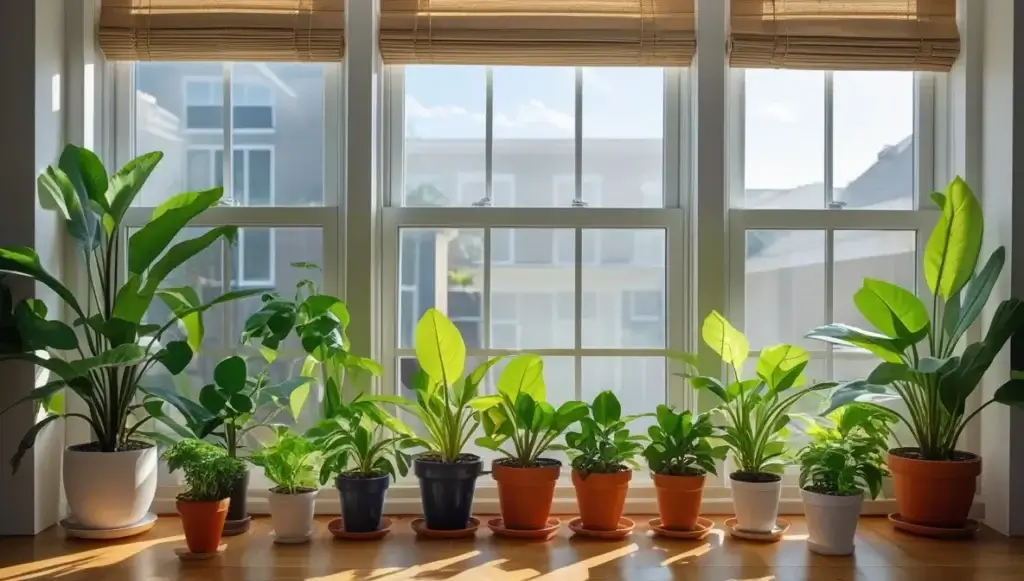
Where you place your plants can significantly impact their health. Consider these tips:
South-Facing vs. North-Facing Windows
South-facing windows provide the most sunlight, making them ideal for high-light plants. North-facing windows, on the other hand, offer softer, indirect light suitable for low-light plants.
Avoiding Light Burn
If your plants are too close to a light source, their leaves may scorch or turn brown. Maintain a safe distance to avoid overheating.
Rotating Plants for Even Growth
Indoor plants often grow towards their light source. Rotate your plants every few weeks to ensure even growth and prevent them from leaning too much in one direction.
Using Artificial Lights Effectively
Artificial lights are a lifesaver for indoor plants, especially in spaces where natural light is scarce. However, to get the most out of these lights, you need to set them up correctly and maintain their usage over time. Here’s how:
Setting Up Grow Lights: Height and Positioning
Proper positioning is crucial when using grow lights. Place the lights at an appropriate distance from the plants to avoid overheating or underexposure. For most LED grow lights, a distance of 12-24 inches from the plant canopy works well. Fluorescent lights can be placed closer, usually about 6-12 inches away.
Adjusting Light Based on Plant Growth Stages
Different plants require varying amounts of light during their growth cycles. Seedlings and young plants generally need more intense light than mature plants. During the flowering stage, red-spectrum light becomes more critical. Adjust your lighting setup to match these stages, ensuring your plants thrive every step of the way.
Timer Systems for Consistent Exposure
Maintaining a consistent light schedule is essential for indoor plants. Using a timer can automate the process, ensuring your plants get the exact hours of light they need daily. This consistency mimics natural day-night cycles, helping plants grow healthily without stress.
Common Mistakes in Lighting Indoor Plants
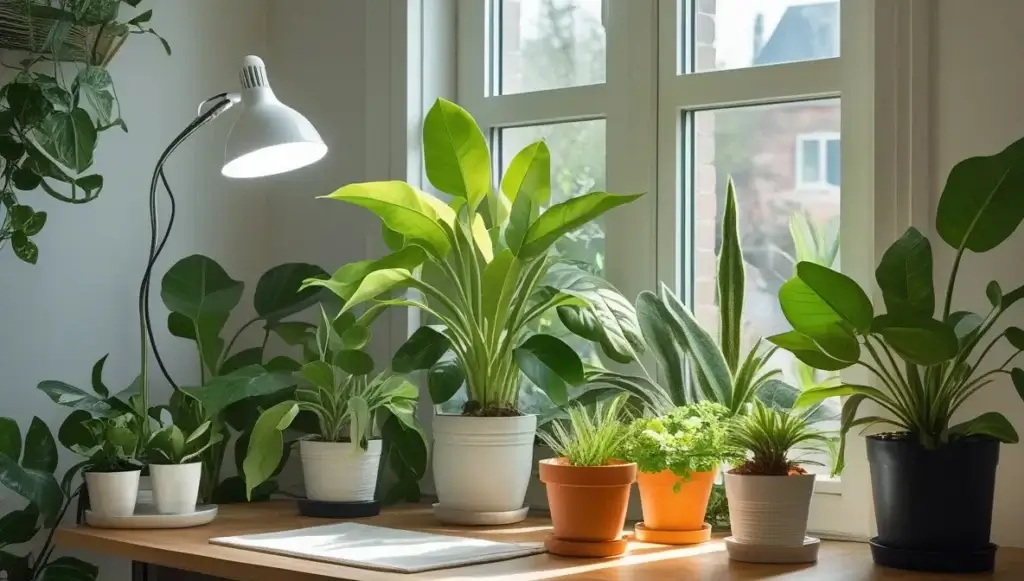
Lighting indoor plants may seem straightforward, but a few common mistakes can prevent your plants from thriving. Let’s identify and correct these issues:
Overexposure vs. Underexposure
While some plants love bright light, too much of it can lead to light burn, where leaves turn brown or crispy. On the flip side, underexposure can cause weak, leggy growth. Pay attention to your plant’s response to its lighting setup.
Relying Solely on Window Light
Many plant parents make the mistake of assuming that placing plants near a window will suffice. However, not all windows provide the right intensity or duration of light. Supplement natural light with artificial lights as needed, especially during winter months or in low-light rooms.
Not Matching Light to Plant Type
A one-size-fits-all approach doesn’t work for indoor plants. Each plant has specific lighting needs based on its native habitat. For instance, tropical plants like ferns thrive in filtered light, while desert plants like cacti need direct, intense sunlight. Research your plant’s requirements to avoid mismatched lighting.
Benefits of Proper Lighting for Indoor Plants
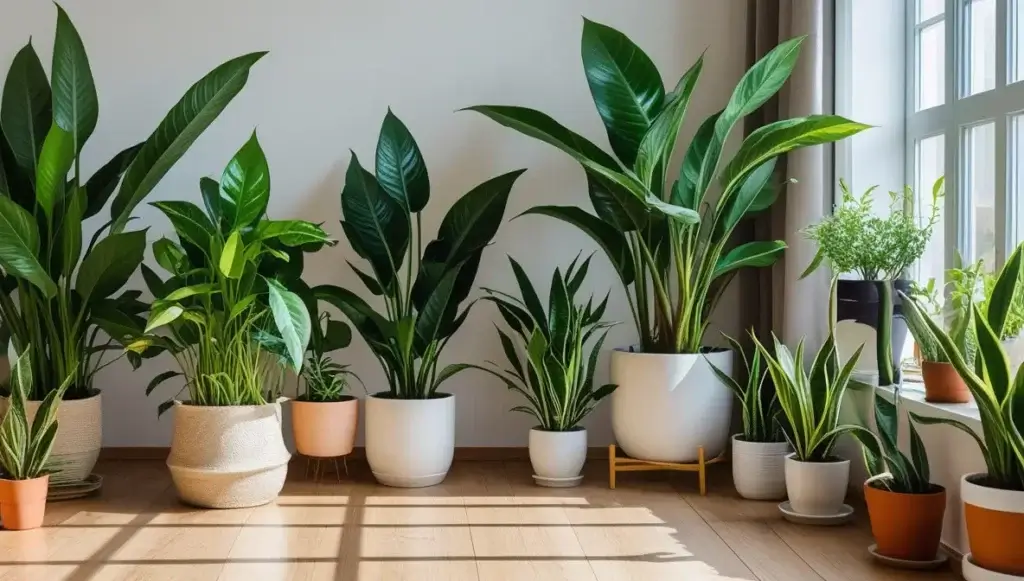
When your indoor plants receive the right lighting, the benefits go far beyond their appearance. Here are some perks of getting the lighting right:
Improved Plant Growth and Flowering
Adequate lighting ensures your plants grow strong and healthy. It encourages lush foliage, sturdy stems, and vibrant flowers. Plants like orchids or African violets can bloom beautifully indoors when given the proper lighting conditions.
Reduced Stress and Improved Indoor Environment
Healthy plants not only look great but also improve indoor air quality by absorbing carbon dioxide and releasing oxygen. Moreover, they add a sense of tranquility and connection to nature in your home. Correct lighting keeps your plants stress-free, ensuring they play their part in creating a calming indoor space.
FAQs on Lighting for Indoor Plants
1. What type of light is best for indoor plants?
The best light for indoor plants depends on the plant’s requirements. For most plants, a combination of natural sunlight and full-spectrum LED grow lights works best. These lights provide a balanced mix of red and blue wavelengths essential for plant growth and flowering.
2. How many hours of light do indoor plants need?
Most indoor plants need about 12-16 hours of light daily, depending on the species. Low-light plants may require less, while high-light plants may need closer to 16 hours. Use timers to maintain a consistent schedule.
3. Can LED lights be used for all types of plants?
Yes, LED grow lights are versatile and suitable for nearly all types of indoor plants. They offer full-spectrum lighting, are energy-efficient, and emit minimal heat, making them ideal for various plant species.
4. How can I tell if my plant is getting enough light?
Signs of adequate lighting include vibrant green leaves, sturdy growth, and healthy flowering. If a plant isn’t getting enough light, it may exhibit yellowing leaves, slow growth, or stretching towards the light source.
5. What are signs of too much light for indoor plants?
Too much light can cause leaf burn, where the edges of the leaves turn brown or crispy. Plants may also lose their vibrant color and appear bleached. Adjust the light intensity or move the plant further away from the light source if these signs appear.

My name is Mahi Uddin, and I’m a blog writer with over two years of experience specializing in creating engaging, informative content using AI tools. I contribute to InExDecor.com, where I share creative ideas and practical tips for transforming interior and exterior spaces into beautiful, functional environments. With a passion for storytelling and a knack for blending creativity with technology, I strive to craft blogs that not only inform but also inspire readers. When I’m not writing, you can find me exploring design trends or enjoying a good book with a cup of coffee.

